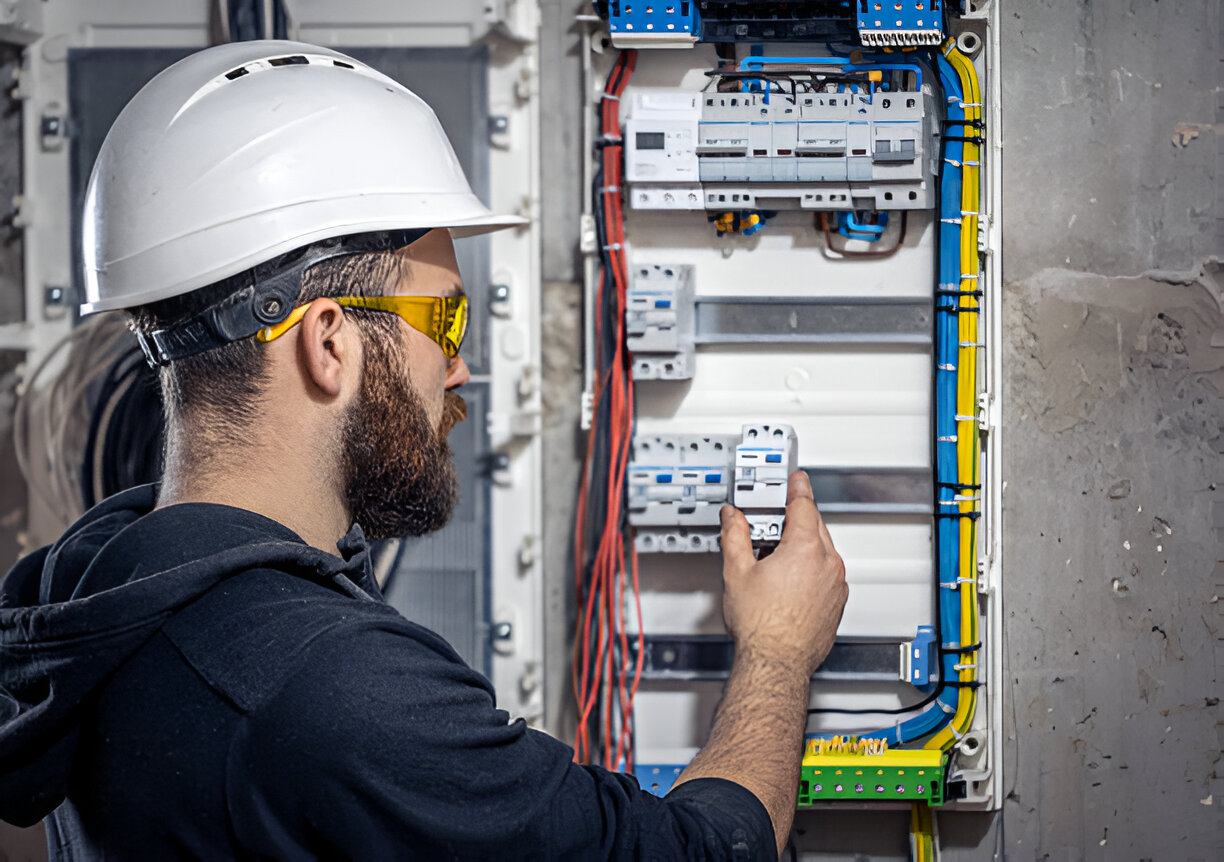
You’ve likely heard about the British Standard for Electrical Installation, or BS 7671, but you might not fully understand its scope and why it’s crucial for your projects. This set of regulations isn’t just a bureaucratic requirement; it fundamentally shapes the safety and efficiency of electrical systems throughout the UK. As you’re planning your next installation, consider how compliance with these standards affects everything from system reliability to legal accountability. But there’s more to it—especially regarding the impact of recent amendments on your specific operations. What could these changes mean for the future of your projects? Let’s explore. Let’s understand What Is the British Standard for Electrical Installation?
Overview of BS 7671
BS 7671, commonly known as the IET Wiring Regulations, sets the standards for electrical installations within the UK.
You’re dealing with a framework designed to ensure electrical safety and uphold installation standards across diverse environments. Comprehending this standard is crucial for your mastery in safeguarding both property and human life from electrical hazards.

These regulations encapsulate a broad spectrum of criteria, from the selection and erection of equipment to the verification and testing of installations.
Each clause and regulation within the standard serves a specific safety or functional purpose, demanding your acute attention to detail.
As you navigate through these regulations, your ability to interpret and implement them effectively will enhance safety outcomes and compliance in your electrical projects.
Historical Development
Understanding the context and evolution behind BS 7671 can enhance your ability to apply its principles effectively.
The historical context of BS 7671 reveals a trajectory shaped by increasing demands for safety and efficiency in electrical installations. Initially formed from the 16th edition of the IEE Wiring Regulations, it has undergone significant changes reflecting technological advancements and higher safety norms.
This regulatory evolution is marked by the integration of European and international standards, ensuring a harmonized framework conducive to modern engineering practices.
As you delve deeper into its revisions, you’ll notice each amendment aligns closely with emerging electrical safety data and installation technologies, underscoring a commitment to adapting to dynamic industrial environments.
Keep this progression in mind as you implement its guidelines.
Key Components Explained
Let’s delve into the key components of BS 7671 to ensure you grasp the essentials of this standard.
This framework is pivotal in defining the minimum safety standards and effective installation practices for electrical systems. It encompasses detailed protocols for design, selection, erection, verification, and maintenance.

Each section is meticulously crafted to mitigate risks associated with electrical installations, emphasizing protection against electric shock, thermal effects, and overcurrents.
Moreover, the standard specifies requirements for special installations or locations such as bathrooms, swimming pools, and explosive atmospheres, ensuring tailored safety measures are in place.
Understanding these components is crucial for implementing robust electrical solutions that not only comply with legal requirements but also uphold the highest safety protocols.
Compliance Requirements
Having explored the key components of BS 7671, you must now focus on meeting its compliance requirements to ensure your electrical installations adhere to these rigorous standards.
You’re tasked with integrating specific safety regulations and installation standards into every project. This involves conducting thorough risk assessments and ensuring all components meet the precise criteria set forth by BS 7671.
Documentation plays a critical role here; you’ll need to maintain detailed records of the design, implementation, and testing processes. This meticulous approach not only enhances safety but also facilitates future inspections and maintenance.
Impact on Residential Installations
In residential settings, the implementation of BS 7671 significantly elevates electrical safety and operational standards.
You’ll notice that adherence to these standards mandates rigorous safety measures and refined installation techniques, ensuring your home isn’t only compliant but also a safer environment.

The impact of these regulations can be seen in several key areas:
- Enhanced Protection: Installation of advanced circuit breakers and RCDs to guard against electrical faults.
- Improved Wiring Practices: Adoption of standardized wiring colors and configurations reduces risks and facilitates future maintenance.
- Energy Efficiency: Guidance on the installation of energy-efficient systems and components minimizes energy consumption while maintaining safety.
Embracing these standards will substantially increase the safety and efficiency of electrical installations in your home.
Implications for Commercial Projects
Shifting the focus to commercial projects, the application of BS 7671 introduces a set of challenges and benefits distinct from those in residential settings.
You’ll find that safety considerations become increasingly complex due to the scale and usage diversity of commercial buildings. Adherence to this standard ensures that you mitigate electrical risks which, in turn, protects not only human life but also your investments in infrastructure.
Simultaneously, project budgeting must account for the comprehensive compliance required under BS 7671. This can influence the initial financial layout; however, it’s essential to recognize that this upfront cost contributes to long-term savings by preventing costly compliance failures and enhancing system reliability.
Consequently, mastering these standards is crucial for the economic and safe operation of your commercial installations.
Regular Updates and Amendments
To stay compliant with evolving safety and efficiency standards, you must regularly update and amend your electrical installations in line with the latest version of BS 7671.
The amendment process ensures that all practices align with the most current safety protocols and technological advancements. Understanding the schedule and scope of regular revisions is crucial.
- Identification of Changes: Recognize updates in regulatory requirements and technical standards.
- Implementation Strategy: Develop a plan for integrating these changes into existing systems.
- Documentation and Records: Maintain detailed logs of amendments for legal and operational auditing.
Adhering to these steps not only enhances safety but also optimizes the performance of your electrical systems, ensuring they meet stringent British Standards.
How to Ensure Compliance
To ensure compliance with the British Standard for Electrical Installation, you must systematically assess and update your procedures and equipment.
Begin by implementing rigorous inspection procedures that adhere strictly to the latest standards. These inspections shouldn’t only verify current compliance but also identify potential issues that could jeopardize future conformity. You’ll need to maintain meticulous records of these inspections to support the certification processes.
Engage in continuous training to ensure your team’s expertise remains at the forefront of industry practices and technological advancements. This knowledge is crucial for interpreting and applying the standards correctly.
Conclusion
You must ensure compliance with BS 7671 to safeguard your electrical installations. Regularly updated, this standard mitigates risks such as electric shock and overcurrent, enhancing safety and reliability in both residential and commercial settings. Stay informed on amendments and understand the key components to maintain adherence. Your proactive engagement with these regulations not only protects property and lives but also optimizes the efficiency and longevity of your electrical systems, ensuring they meet contemporary safety and operational standards.
Our Pricing
| Our Electrical Safety Certificate Prices |
|---|
| Studio Apartment £67.99 |
| 1 – 3 Bedroom £94.99 |
| 4 Bedroom £104.99 |
| 5 Bedroom £139.99 |
Check Out Our Other Services
| EICR | Commercial EICR | Emergency Light Certificate |
|---|---|---|
| Electrical Diagnostic | PAT Testing | Fuse Box Installation |












